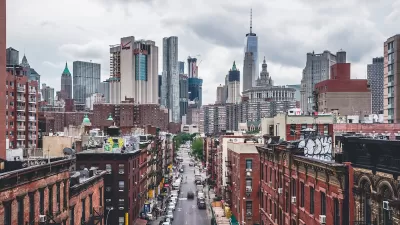Matt Chaban explores the divided opinions on the work of the fairly new architecture critic for The New York Times, Michael Kimmelman, who some complain isn't writing enough about Architecture.
Many of Kimmelman's pieces written over his first four months on the job have focused on larger issues of urbanism and public design, which has his detractors clamoring for more traditionally defined architectural analysis. At a recent talk at Columbia, earlier this week, Kimmelman acknowledged the thrust of his work as described above, but parried his critics, "[a] false dichotomy has been set up; there's this idea that writing about urban affairs and architecture are separate," he said. "They're part of the same world."
According to Chaban, Kimmelman went on to explain at the event how he might write about a specific building, such as Zaha Hadid's MAXXI Museum in Rome, by investigating its impact on the larger neighborhood.
This framing of analysis may seem natural, and even desirable to most planners, or those concerned with the interaction between architecture and larger forces, but for Chaban it is startling, and leaves something to be desired.
"It is a new and bracing way to write about architecture. In the past, the museum would likely have been compared to others of its ilk, alongside MoMA, the Guggenheim Bilbao, maybe Daniel Libeskind's severe Denver Art Museum. It is peg versus peg."
"Kimmelman seems to care very little for these games and would rather focus on whether or not that peg fits into the hole into which it has been placed, something that really does not happen enough. The only problem is it can lead to articles that read quite a lot alike. At least that is the superficial reading."
FULL STORY: Michael Kimmelman Will Not Play Your Architecture Games

Alabama: Trump Terminates Settlements for Black Communities Harmed By Raw Sewage
Trump deemed the landmark civil rights agreement “illegal DEI and environmental justice policy.”

Study: Maui’s Plan to Convert Vacation Rentals to Long-Term Housing Could Cause Nearly $1 Billion Economic Loss
The plan would reduce visitor accommodation by 25% resulting in 1,900 jobs lost.

Why Should We Subsidize Public Transportation?
Many public transit agencies face financial stress due to rising costs, declining fare revenue, and declining subsidies. Transit advocates must provide a strong business case for increasing public transit funding.

Paris Bike Boom Leads to Steep Drop in Air Pollution
The French city’s air quality has improved dramatically in the past 20 years, coinciding with a growth in cycling.

Why Housing Costs More to Build in California Than in Texas
Hard costs like labor and materials combined with ‘soft’ costs such as permitting make building in the San Francisco Bay Area almost three times as costly as in Texas cities.

San Diego County Sees a Rise in Urban Coyotes
San Diego County experiences a rise in urban coyotes, as sightings become prevalent throughout its urban neighbourhoods and surrounding areas.
Urban Design for Planners 1: Software Tools
This six-course series explores essential urban design concepts using open source software and equips planners with the tools they need to participate fully in the urban design process.
Planning for Universal Design
Learn the tools for implementing Universal Design in planning regulations.
Smith Gee Studio
Alamo Area Metropolitan Planning Organization
City of Santa Clarita
Institute for Housing and Urban Development Studies (IHS)
City of Grandview
Harvard GSD Executive Education
Toledo-Lucas County Plan Commissions
Salt Lake City
NYU Wagner Graduate School of Public Service





























